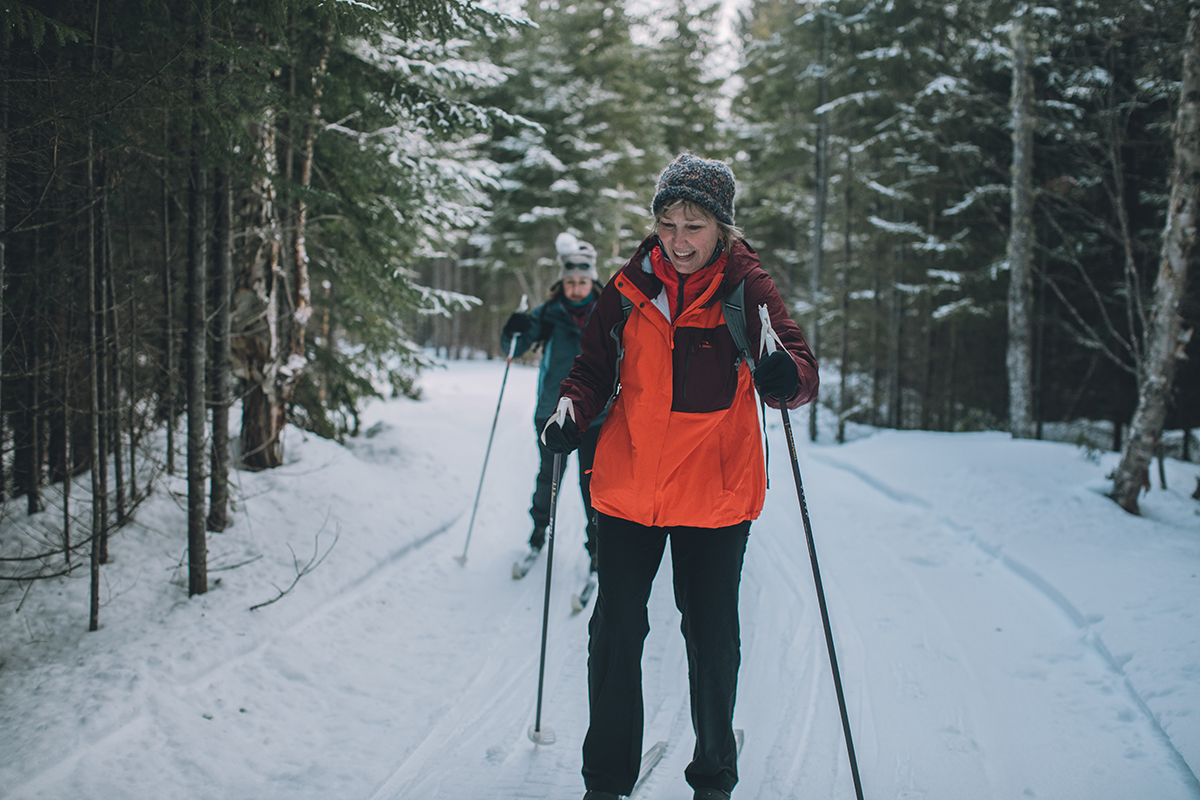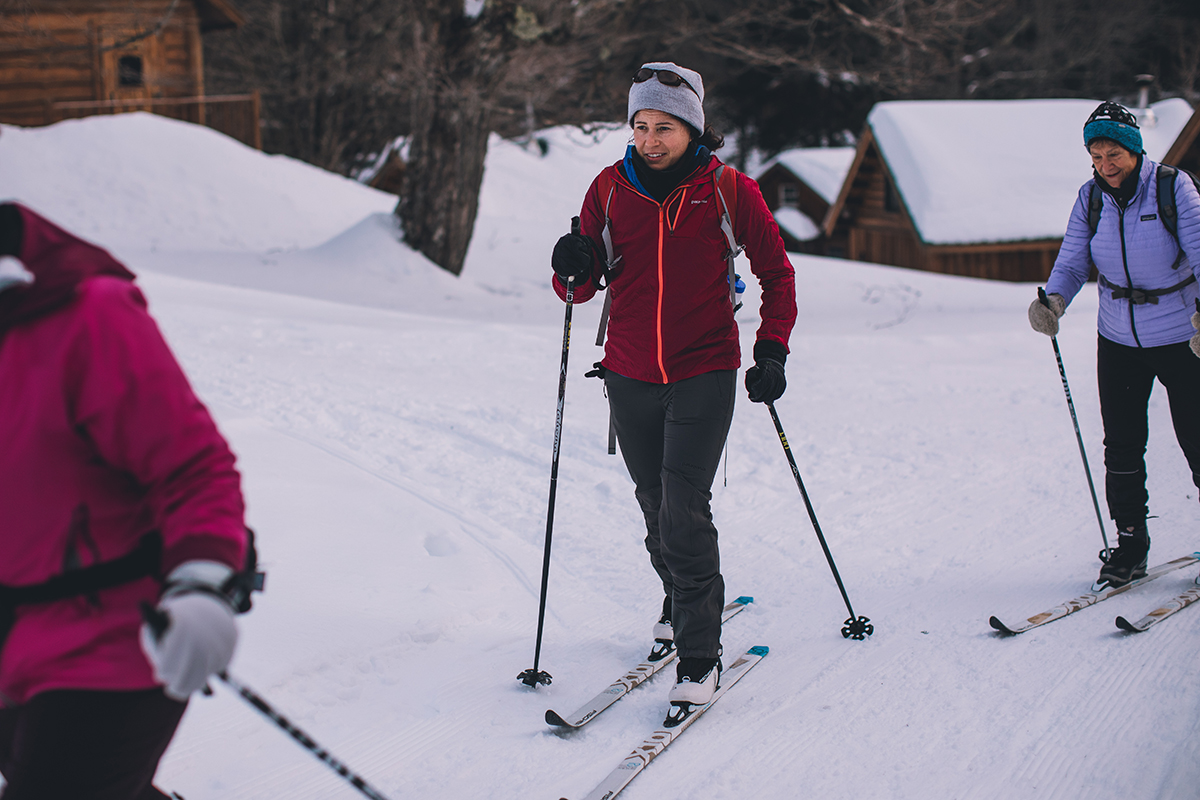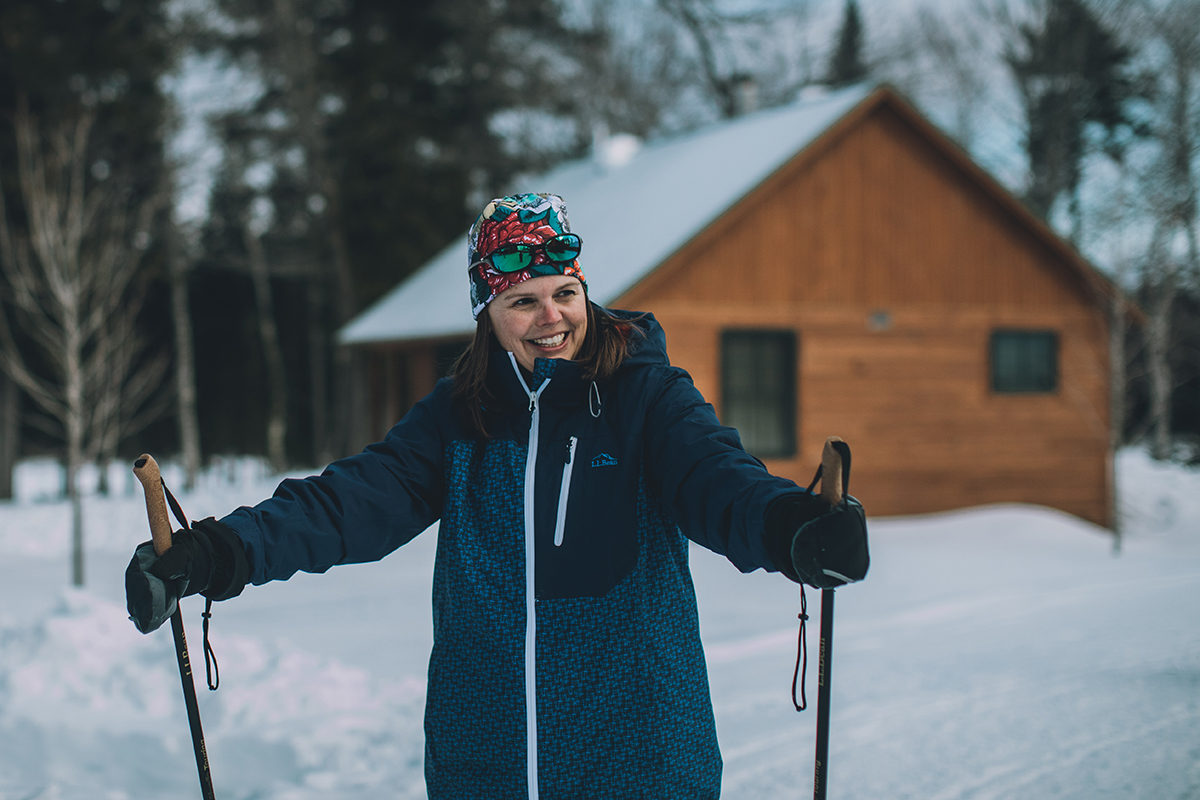
Cross-country skiing in the Maine Woods
Cross-country skiing is a passport to winter adventure. Whether it’s gliding through snow-spangled woods or a cardio-pumping cruise on groomed trails, every winter enthusiast should have a set of cross-country skis in their gear locker. Some specialized equipment is required but getting started is pretty straightforward.
So before you head to your local ski shop—and confront a potentially bewildering array of options—here are the basics you need to know about selecting skis, boots, bindings, and poles.
Style check: Classic vs. skate
There are two types of cross-country skiing: classic and skate. In classic, both skis point straight ahead and you move by sliding them forward parallel to each other. This style is easiest to learn, most versatile for traveling a range of winter trails and rolling terrain, and generally recommended for beginners—it is the primary focus of this article.
Skate, or freestyle, is a more specialized form of cross-country skiing that requires the wide groomed trails only found at cross-country ski centers. It’s fast, exhilarating, and a heart-juicing, full-body workout, but requires both a different technique and set of equipment than classic. (Think of it like ice skating with really long skates; skiers slide their skis diagonally forward and then push off using the ski edge while also poling forward.)

How to choose the right boots and bindings.
Boots and bindings
As with hiking boots and other outdoor footwear, fit is paramount when it comes to selecting cross-country ski boots, so start feet first when choosing a set-up. For both classic and skate, look for styles that hold your heel firmly in place, provide sufficient room in the toe box, and fit snugly throughout without being uncomfortably tight anywhere. The goal is to minimize foot motion inside your boot, the primary cause of discomfort and blisters.
Once you’ve identified a winner, the bindings come next. These days ski companies produce several interchangeable binding styles: NNN (a long-time standard), plus the newer Turnamic (Rossignol, Fischer) and ProLink (Salomon) binding systems. Most current cross-country ski boots are compatible with any one of these bindings. (Salomon used to only produce a specialized boot style and binding, known as SNS, which was incompatible with other brands. Though they introduced more universal binding options in 2016, SNS bindings are still available, and you commonly see them in older equipment.)
Ski basics
Classic cross-country skis work by combining grip and glide. The tips and tails provide a low-friction surface for sliding forward, while the area directly underfoot features a high-friction surface (the “kick zone”). The skis are arched upward, or cambered, so that only the tips and tails are in contact with the snow when your weight is distributed over both skis. When one ski is fully weighted, it flexes to bring the kick zone into contact with the snow. This grip provides the leverage to push off and move forward.
Once upon a time, grip used to be provided by a kick wax that was applied manually, but these days nearly all recreational skis are “waxless” and instead feature a raised pattern underfoot that generates friction from its scale-like texture. (Skate skis, on the other hand, are smooth-sliding along their entire length.)
Classic skis are sized based on the skier’s weight to achieve the proper balance between grip and glide. Manufacturers provide a recommended weight range for each length of ski. If you fall in the border zone between two ranges, keep in mind that the shorter ski will provide better grip (and be easier for learning) but not glide as efficiently.

Selecting the right pole sizing.
Pole sizing
Pole length varies in 5-centimeter increments. To find the size that’s right for you for classic skiing, hold the poles vertically next to your body and find the length that extends to your armpits. For skate, the poles should reach between your chin and lips.
Basic poles can be inexpensive but pay close attention to the wrist straps. Cheaper models feature nothing more than a thin nylon strap, which can chafe uncomfortably on a long outing. Poles with padded wrist straps are a worthwhile investment. Aluminum poles are the more durable and affordable choice; more committed skiers can pay more for lighter weight materials.
The full package and when to buy
Many ski shops and outfitters offer package deals for classic skiing that include boots, bindings, skis, and poles at a discounted rate. Expect to pay between roughly $300 – $500 for a complete set-up, more if you are purchasing each item individually.
It’s best to buy early in the winter season if possible; inventory and choices often get thin by mid-winter. Options are at their peak before Christmas, while January often brings some sales and discounts. Come February and especially March, many retailers have limited options remaining (though what’s left can often be had at clearance prices).